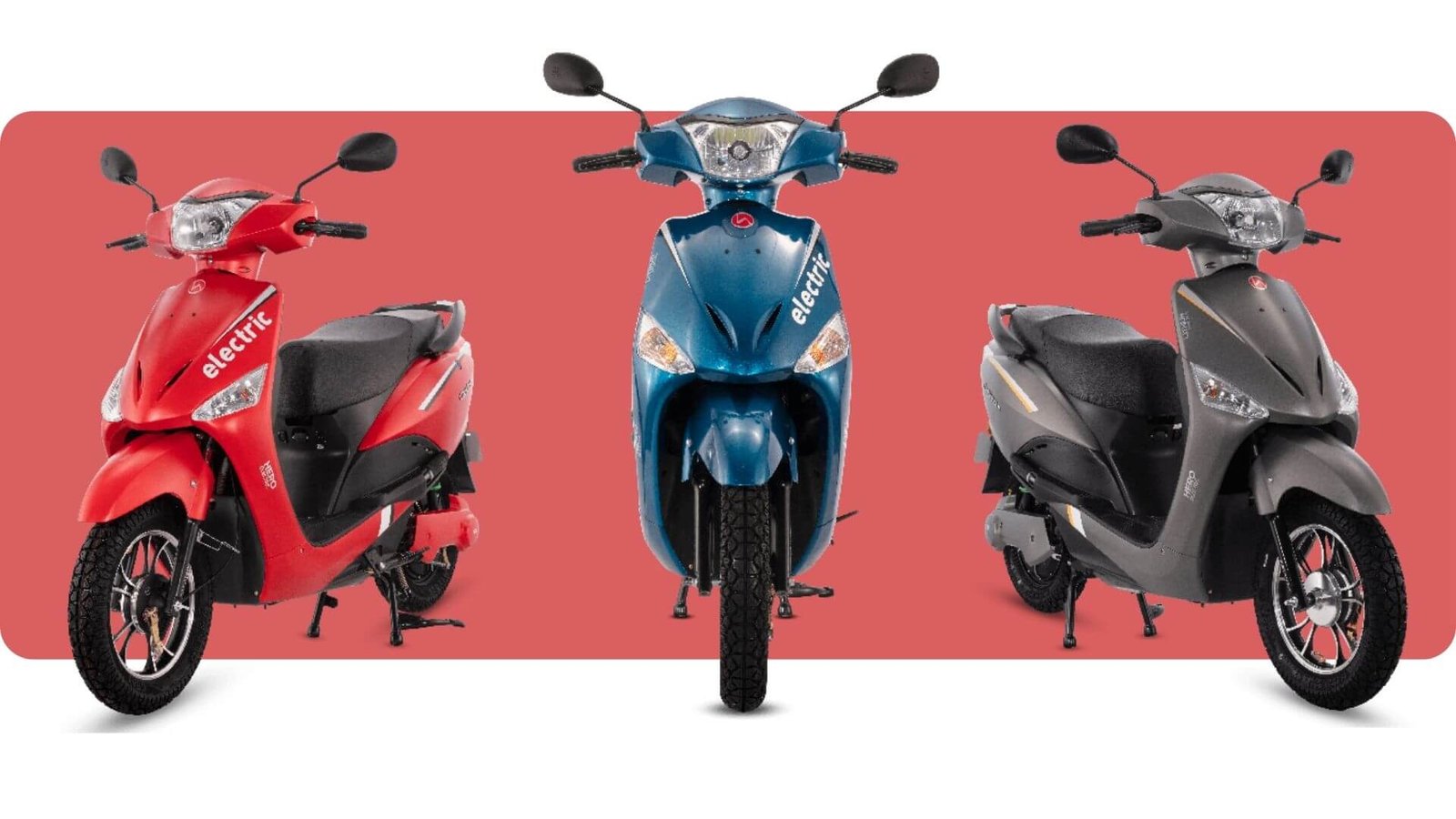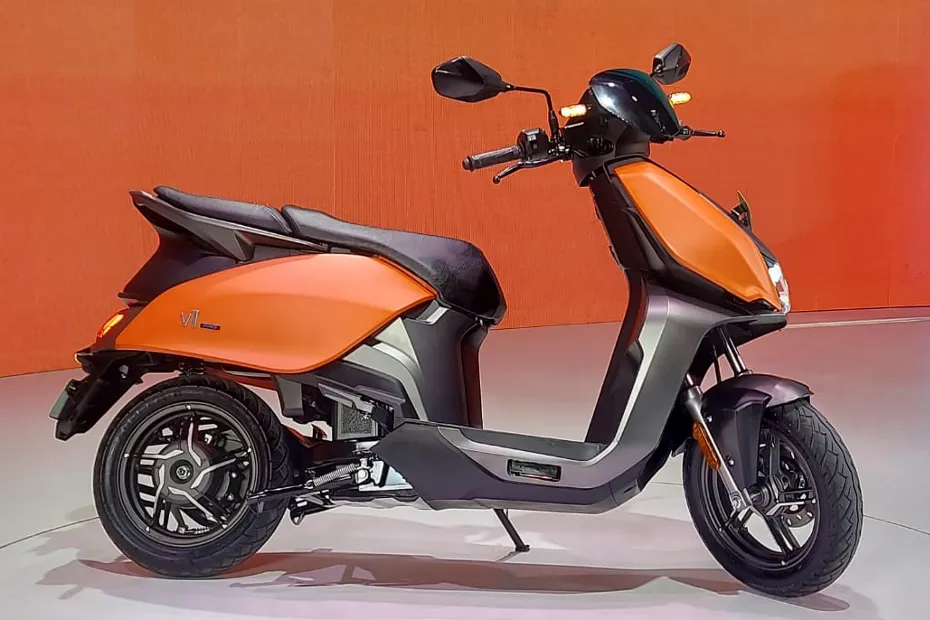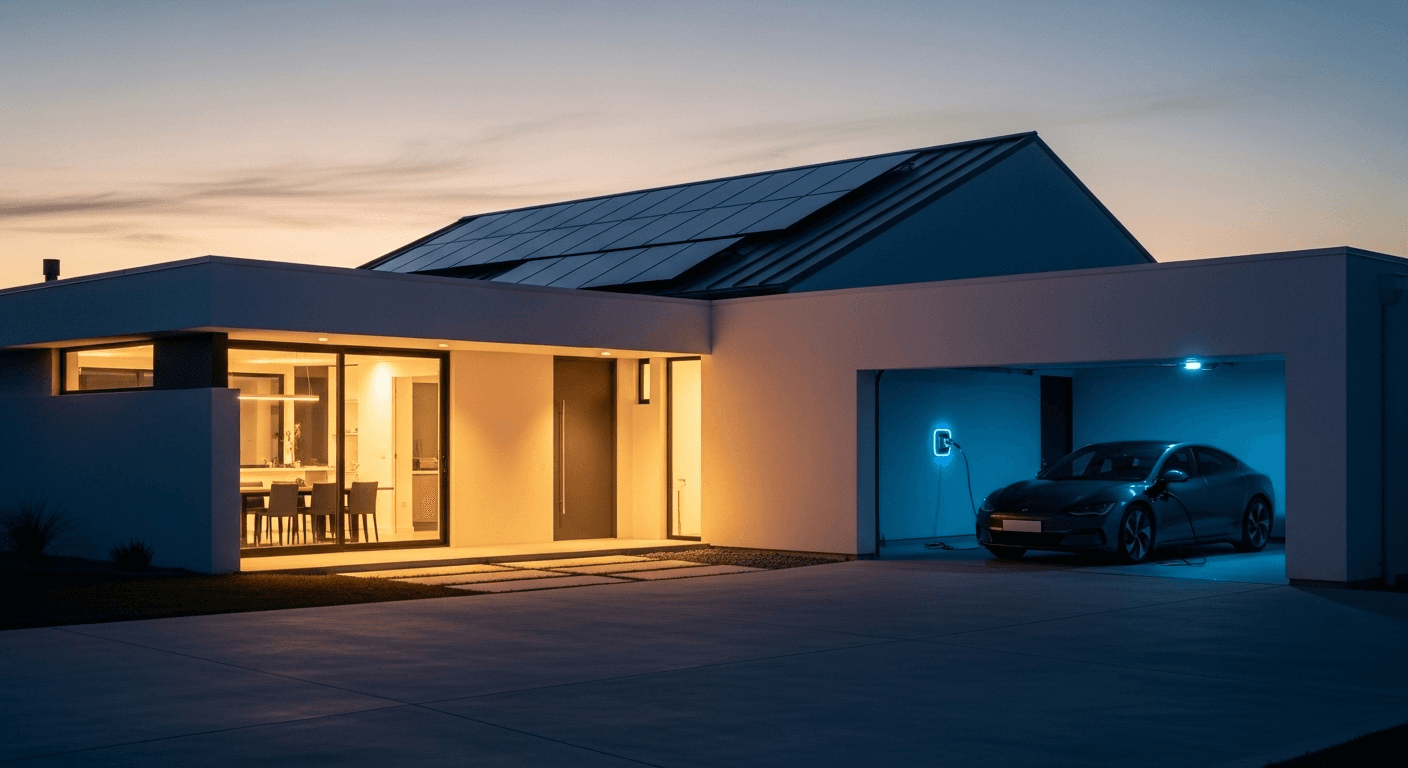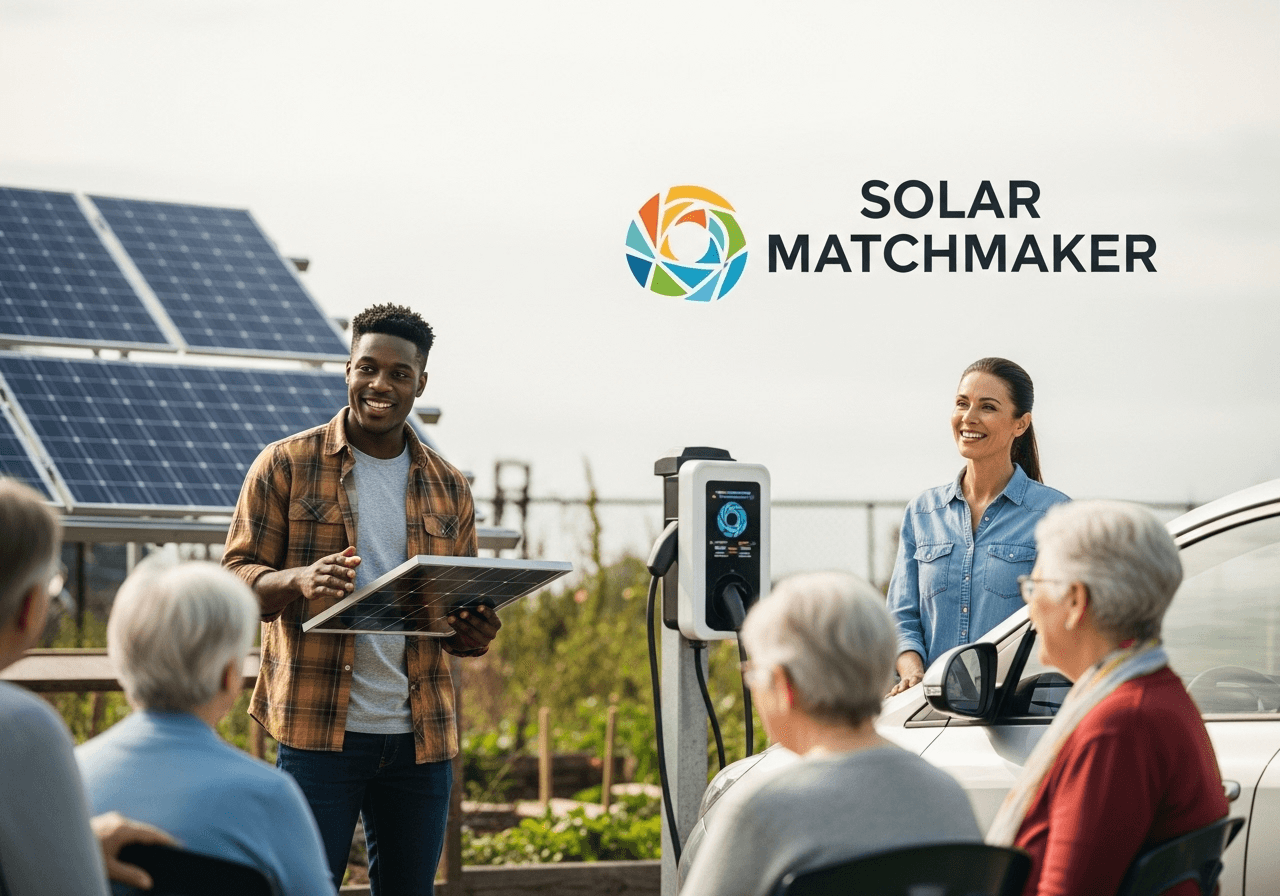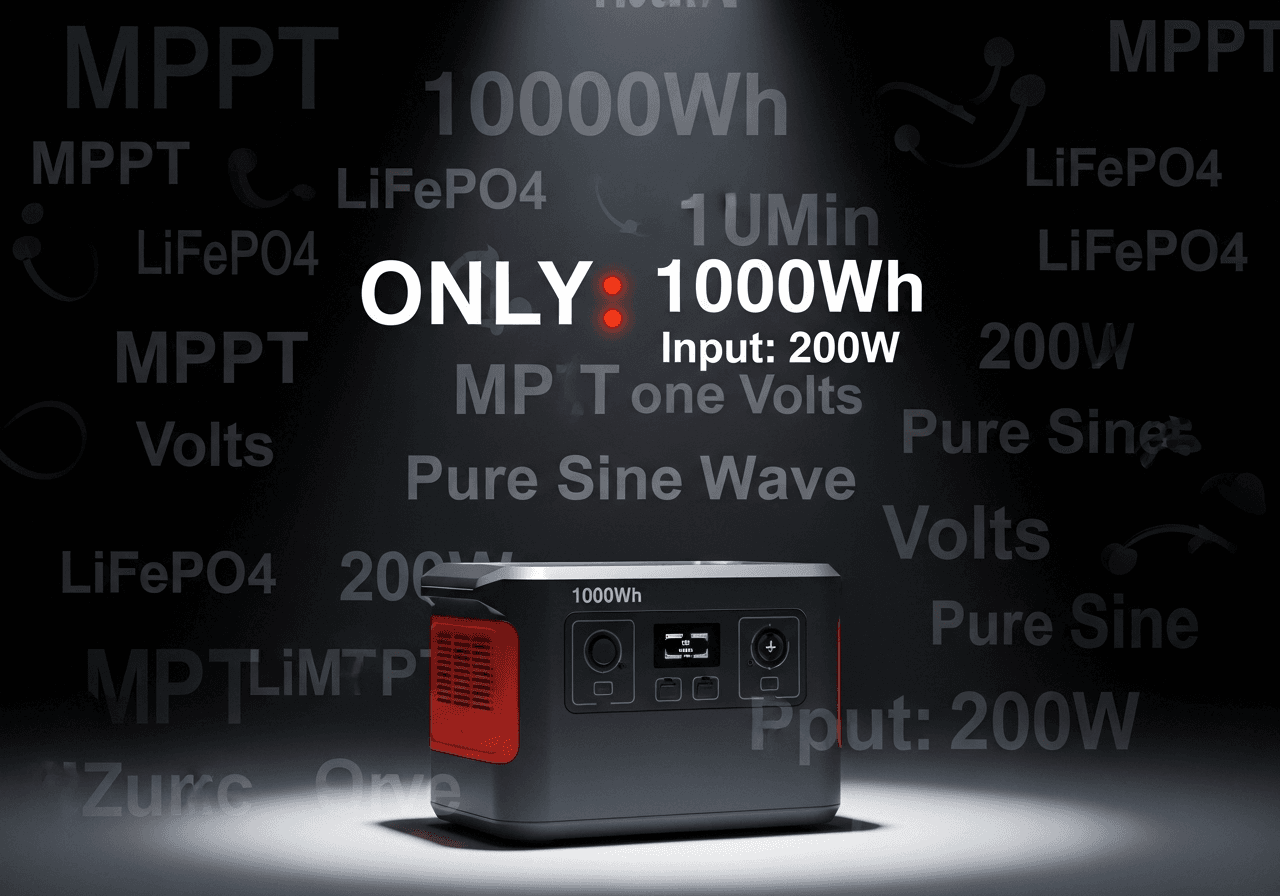From DC to AC, sizing to cost, and hybrids to microinverters—this is the complete, expert guide to understanding the most critical component of your solar setup
When you dream of a solar-powered future, you probably picture gleaming solar panels on a sun-drenched roof. But the panels, for all their glory, are just the muscle. The real unsung hero—the brain of the entire operation—is a box on the wall you might not even notice: the solar inverter.
For anyone new to solar, the inverter can seem like a mysterious black box. Why do you need one? What does it actually do? How do you choose the right size?
This is the definitive guide to answer all of those questions and more. We’ll demystify this critical piece of technology and give you the expert clarity needed to design a truly efficient and reliable power system.
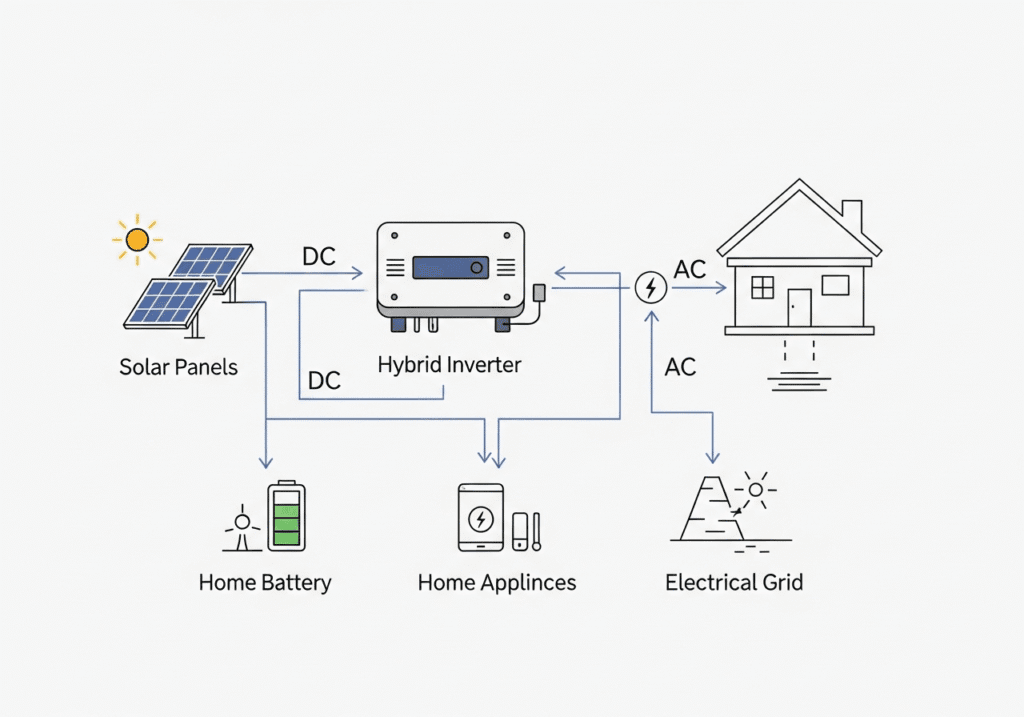
What Does a Solar Inverter Actually Do? The Core Job
At its heart, a solar inverter is a power translator.
Solar panels generate Direct Current (DC) electricity. Think of DC power as raw, untamed energy—powerful but not in a format that your home can use. Your household appliances, from your TV to your toaster, all run on Alternating Current (AC) electricity.
The solar inverter’s primary job is to take the raw DC electricity from your solar panels and convert it into the stable, usable AC electricity that powers your life.
Without an inverter, the energy generated by your solar panels would be completely useless for your home. As the saying goes, “when installing solar panels, there is no power until you connect to the inverter.”
The Three Main Types of Solar Inverters (And Which is Right for You)
Not all inverters are created equal. The type you choose will fundamentally impact your system’s performance, cost, and future-readiness.
1. String Inverters (The Classic Workhorse)
This is the most common and cost-effective type. Multiple solar panels are wired together in a series (a “string”), and all of that combined DC power is sent down to a single, centralized inverter on the wall.
- Best for: Uncomplicated roofs with no shading issues.
- Pros: Lowest cost, proven technology, easy to maintain.
- Cons: A single shaded or underperforming panel can reduce the output of the entire string.
2. Microinverters (The Smart Maximizer)
Instead of one large inverter, a small microinverter is attached directly to the back of each individual solar panel. Each panel converts its DC power to AC right on the roof.
- Best for: Complex roofs with multiple angles or intermittent shading.
- Pros: Maximizes power by isolating each panel’s performance, allows for detailed panel-level monitoring.
- Cons: Higher upfront cost, more complex to service since the components are on the roof.
3. Hybrid Inverters (The All-in-One Power Hub)
This is the future of home energy. A hybrid inverter is a multi-talented device that can not only convert DC to AC but also manage power from solar panels, a battery bank, and the electrical grid simultaneously.
- Best for: Anyone who has or plans to add a battery for backup power or off-grid living.
- Pros: All-in-one solution for solar, storage, and grid interaction. Enables advanced features like selling power back to the grid and prioritizing battery use.
- Cons: Can be more expensive than a standard string inverter.
| Feature | String Inverter | Microinverters | Hybrid Inverter |
| Best For | Simple, unshaded roofs | Complex or shaded roofs | Homes with battery backup |
| Efficiency | Good | Excellent | Excellent |
| Cost | Low | High | Medium to High |
| Shade Tolerance | Poor | Excellent | Good (depends on panel setup) |
| Monitoring | System-level | Panel-level | System & Battery-level |
The Million-Dollar Question: What Size Solar Inverter Do I Need?
Sizing your inverter correctly is crucial. An undersized inverter will “clip” or waste power from your panels, while an oversized one is a waste of money.
The Golden Rule: Your inverter’s wattage should be sized to roughly match the total wattage of your solar array.
- Calculation: Total Solar Panel Wattage ≈ Inverter Size.
- Example: If you have 10 solar panels that are each 400 watts, your total solar array is 4,000 watts (or 4 kW). You would need an inverter with a capacity of 4,000W to 5,000W. It’s common practice to slightly “oversize” the solar array compared to the inverter (e.g., 5kW of panels on a 4kW inverter), as panels rarely produce their maximum rated power.
Common Question: “How many solar panels for a 3000-watt inverter?”
Using the same math, if you have a 3000W inverter, you can connect around 3000W of solar panels. With typical 400W panels, that would be 7 panels (7 x 400W = 2800W).
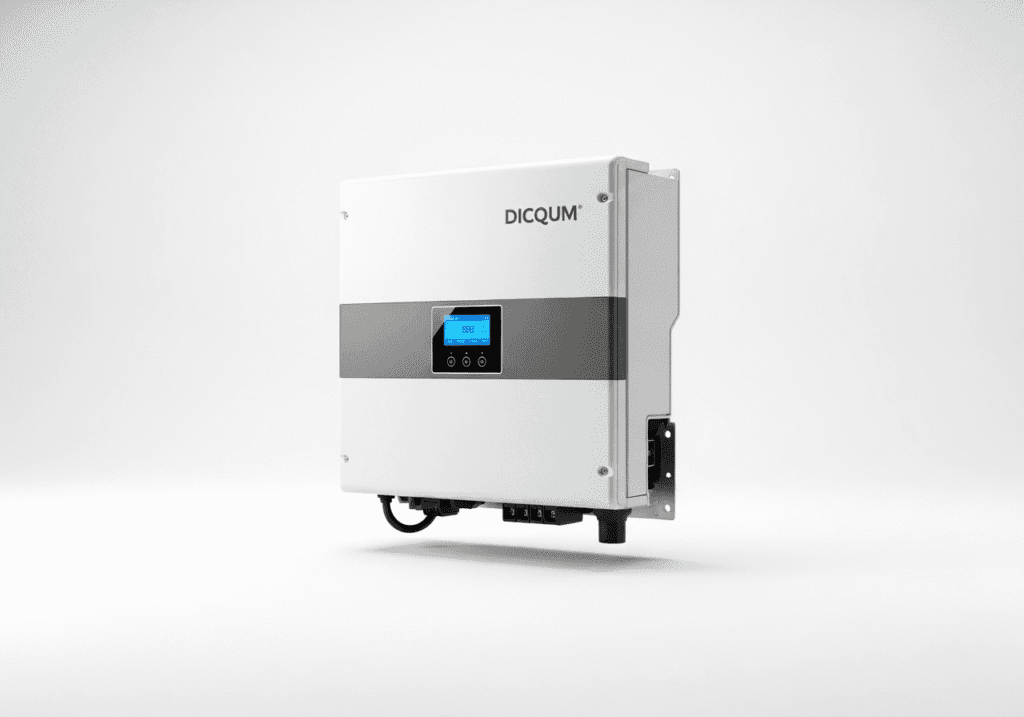
How Much Does a Solar Inverter Cost? A Realistic Breakdown
This is one of the most important questions, and the answer depends heavily on the type, size, and brand. Think of it not as a simple cost, but as an investment in your system’s capability.
| Inverter Type | Typical Size (for a home) | Estimated Cost (USD) | The Bottom Line |
| String Inverter | 5,000W – 8,000W | $1,000 – $1,800 | The most budget-friendly option for simple, grid-tied systems without batteries. |
| Microinverters | Per Panel (~300W each) | $120 – $200 per panel | A premium choice that maximizes power generation. A 20-panel system would add $2,400 – $4,000. |
| Hybrid Inverter | 5,000W – 12,000W | $2,500 – $5,000+ | The most expensive, but also the most powerful and future-proof. This is a required component for any modern battery backup system. |
The Expert Takeaway: Don’t just look at the upfront cost. A cheaper string inverter may save you money today, but it completely closes the door to adding a battery in the future. A hybrid inverter costs more, but buys you energy independence and resilience.
How the System Connects: A Simple Guide
While a detailed installation diagram is complex and site-specific, understanding the flow of power is simple.
- Solar Panels to Inverter: Your panels are wired together and connect to the DC input of your inverter.
- Battery to Inverter (Hybrid Systems Only): For hybrid systems, your battery bank also connects to the inverter’s dedicated DC battery terminals.
- Inverter to Home: The AC output of the inverter is wired into your home’s main electrical panel, just like the power from the grid.
- Inverter to Grid: In a grid-tied system, the inverter is also connected to your utility meter, allowing it to send excess power back to the grid.
Answering Your Top Inverter Questions (FAQ)
Can I use solar panels and an inverter without a battery?
Yes, absolutely. This is called a “grid-tie” system. During the day, you use the solar power as it’s generated, and any excess can be sent back to the grid (if your utility allows it). At night, you simply draw power from the grid as usual.
How do I read my solar inverter display?
The display typically scrolls through key information:
- Current Power: How many watts (W) or kilowatts (kW) your panels are producing right now.
- Daily Yield: How much energy (kWh) you have produced today.
- Total Yield: How much energy (kWh) the system has produced in its lifetime.
- Grid Voltage: The current voltage of the utility grid it’s connected to.
Can I use solar panels and an inverter without a battery?
Yes, absolutely. This is called a “grid-tie” system and is the most common residential setup. During the day, you use the solar power as it’s generated, and any excess can be sent back to the grid (if your utility allows it). At night, you simply draw power from the grid as usual.
How do I install solar panels and an inverter?
Installing a solar system involves working with high-voltage DC electricity and connecting directly to your home’s main electrical panel. Due to the significant safety risks and the need to comply with local electrical codes and utility regulations, this work should almost always be performed by a qualified, licensed, and insured solar installer or electrician.
My inverter screen is blank. How do I “wake it up”?
Most often, a blank screen means the inverter is not receiving sufficient DC power from the solar panels. This is normal at night. If it’s daytime and the screen is blank:
- Check that your DC disconnect switch (a separate lever or switch near the inverter) is in the “ON” position.
- Ensure there’s no heavy shading or snow covering your panels.
The inverter will automatically “wake up” once it detects enough voltage from the panels.
How do I read my solar inverter display?
The display typically scrolls through key information:
- Current Power: How many watts (W) or kilowatts (kW) your panels are producing right now.
- Daily Yield: How much energy (kWh) you have produced today.
- Total Yield: How much energy (kWh) the system has produced in its lifetime.
- Grid Voltage: The current voltage of the utility grid it’s connected to.
How do I reset my solar inverter?
Most inverters can be reset with a standard shutdown/startup procedure:
- Turn off the AC breaker connected to the inverter.
- Turn off the DC disconnect switch.
- Wait 1-2 minutes for the internal capacitors to fully discharge.
- Turn the DC disconnect back ON.
- Turn the AC breaker back ON.
(For specific models like a SolarEdge inverter, always consult the manual first).
What is the best solar inverter brand?
“Best” often depends on your specific needs (budget, features, warranty). However, some of the most consistently trusted and reputable brands in the industry that we covered in our “Market Leaders” section include SMA, Fronius, SolarEdge, Enphase (for microinverters), and Victron (for off-grid and hybrid systems).
Conclusion: The Smart Choice for Your Smart Home
The inverter is not just an accessory; it is the heart and brain of your solar power system. It dictates how efficiently you use your energy, whether you can add batteries in the future, and how resilient your home is during an outage. By understanding the different types and choosing the right size, you ensure that the power generated on your roof is intelligently and reliably delivered to your life.

Suhas Shrikant is the founder of Vecharged and an engineering enthusiast specializing in high-power off-grid solar systems. He has designed and built over a dozen custom systems and uses his hands-on, field-tested experience to create Vecharged’s expert guides and reviews.


